Is your iPhone frequently or occasionally asking you to retype your passcode to enable Face ID without apparent reason?
Are you desperately looking for a guide on how to bypass your passcode is required to enable face ID notification that pops up on your iPhone screen?
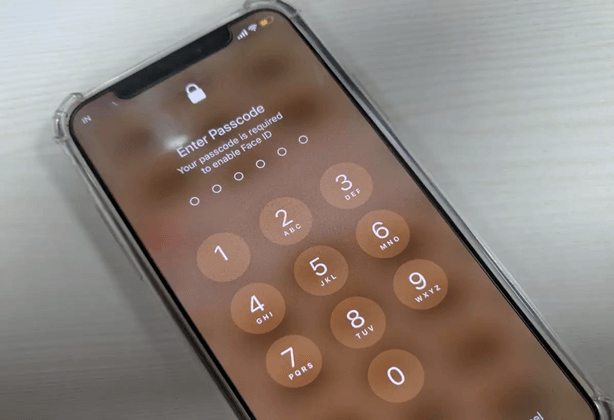
In this article, we will help you understand why your iPhone keeps requesting for a passcode and what you can do about it.
But before we dig deep, let’s face it, folks. Typing your passcode to gain access to your device when you already have the Face ID feature activated can be inconvenient and frustrating.
It may mean having to pull over when driving or withdrawing your eyes from the road for some seconds, which can be dangerous — to say the least!
But hey, before you smash that device out of frustration the next time the message appears on the screen, know what triggers the pop-up and how you can work around the problem.
Let’s now get started!Part 1: Reasons Why Face ID Requires Passcode
Have you ever wondered why you need a passcode in the first place even after you enable face ID?
Well, as you’re about to discover, there are several reasons your iPhone requests for a digital passcode.
Let’s see some of them:
1. As a Security Measure
At a time when our phones are carrying lots of private information, who on earth wouldn’t appreciate an extra layer of protection on their devices? Well, Apple does, and one of the measures they’ve deployed to keep iPhones from unauthorized access is using digital passcodes.
But that’s not to say the Face ID feature isn’t reliable. It actually is. In fact, as per their website, the probability that someone else will unlock your phone in the first attempt using their face is as low as 1 in 1,000,000. That’s only 8,000 people in a vast world of 8 billion people.
But guess what? Apple aims to reduce this number to zero, and one way they’re doing that is by programming their devices to ask for a passcode instead of Face ID under some predefined scenarios. Here are some of the instances when your passcode is required to enable Face ID as set by Apple:
- Once you turn on or restart your phone.
- After 5 unsuccessful attempts to unlock your phone using the Face ID feature.
- In case you haven’t unlocked your phone in the last 48 hours or more.
- Once your iPhone’s remote lock is activated.
- After initiating Emergency SOS, usually by pressing the volume and side buttons simultaneously for 2 seconds.
- In case you haven’t used the passcode to unlock the phone for the last six and half days and the Face ID for over 4 hours.
2. System Updates
A request for a passcode can also be a sign that your phone is using an outdated iOS. Outdated software poses many security risks and can cause unexpected problems like overriding the Face ID feature for a passcode instead.
So, check to see if there’s a recent update from Apple. Go to Settings > General > Software Update. If there’s a new update, download and install it. You can also consider setting your phone to update its iOS automatically.
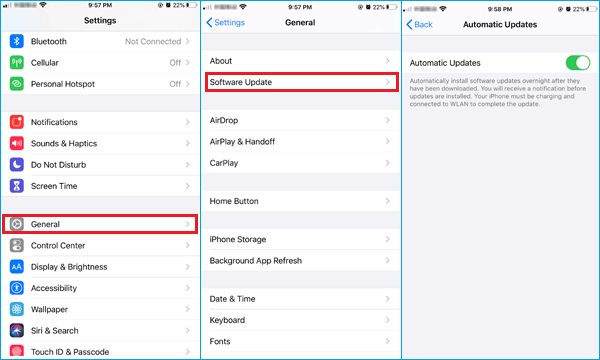
And remember, your device’s battery level should be at least 50% or plugged in before you begin the update. Of course, the WiFi connection must also be stable to avoid issues when updating the software.
If your phone is set to update the iOS automatically, the request for a passcode may indicate that the update has already been installed. In this case, the passcode is required as a verification mechanism before re-enrolling your face.
3. Hardware Issues
In some cases, passcode requests can be a sign of hardware issues. The TrueDepth Camera system, which is responsible for Face ID, may experience malfunctions emanating from physical damage or obstructions.
Perhaps you just installed a screen protector that partially or entirely covers the True Depth Camera. Or, the camera is covered with dust or dirt, making it impossible to get the actual attributes of your face.
When either of these happens, it becomes hard for your phone to recognize your face. So, as a precaution, your device may avoid using the Face ID feature and ask for a passcode instead.
Part 2: Solutions to Enable Face ID Without Passcode
Now that we have a glimpse of what’s causing the problem, the main question remains: What’s the way out? Here are some possible solutions:
1. Standard Method
If you just restarted your device and it’s requesting a passcode, just enter it. Apple devices are designed to ask for a passcode upon booting. It’s a one-time requirement that’s triggered following every restart you make.
“But why is a passcode required to enable Face ID?”“Can’t the device just use Face ID?”
Perhaps you’re asking!
You see, the Face ID feature is undeniably great and highly reliable. But passcode remains Apple’s most trusted security feature. By entering it, you’re reaffirming your identity as the owner of the device.
After keying in the passcode, you can proceed with activating the Face ID feature if inactive.It’s simple: Go to Settings > Face ID > Passcode. This will usher you into convenient facial-recognition-based access.
2. Alternative Appearance
Face ID is smart enough to adapt to minor changes in your appearance. For instance, it can still tell it’s you when wearing cosmetic makeup or after you grow facial hair.
However, in the event of a significant change in your appearance, say you’ve begun wearing glasses or a mask or maybe have shaved a full beard, it may be hard for the device to recognize you.
In this case, you need to re-register your “new face”. The good thing with iPhones and iPads is that they allow you to register up to two different faces on the same device.
So, if you occasionally wear glasses, you can enroll one face with glasses and the other without. This will allow you to unlock the device, regardless of whether you are wearing glasses or not.
To set an alternative face unlock, go to Settings > Face ID > Passcode > Set Up an Alternate Appearance.
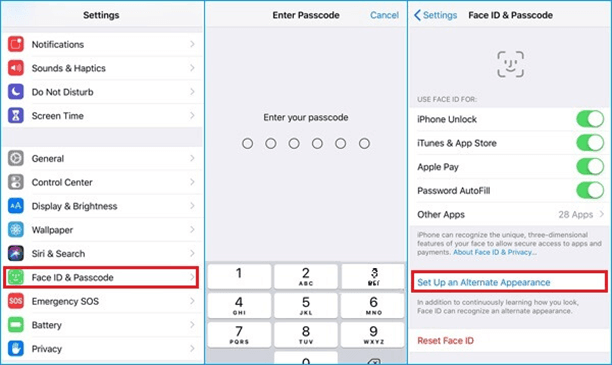
Then, follow the on-screen instructions to register your new look. Ensure you’re in a well-lit environment to let the device capture your face with a greater level of accuracy.
3. Advanced Troubleshooting
If you think the case of the problem goes beyond a mere restart, a software upgrade, or a facial recognition problem, your best bet is to work with Apple’s support team.
The support team is usually more knowledgeable when it comes to Apple devices and can help you solve the problem. They will use their vast knowledge and experience to pinpoint the problem, depending on how you describe it.
Then, they will guide you through the solution on your phone or recommend a repair, depending on their diagnosis.
Part 3: Powerful Solution: FonesGo iPhone Unlocker
If neither of the above solutions resolves your current problem, you still have one option left: the FonesGo iPhone Unlocker .
Developed by FonesGo Studio, this software has proved to be a real lifesaver to millions of people who have found themselves with the need to bypass the passcode option on their device.
That’s to say, whether you forgot your passcode and your iPhone got disabled, bought a second-hand phone only to get stuck on the activation lock screen, or want to make adjustments to the current Apple ID but can’t remember the passcode you initially used, FonesGo iPhone Unlocker software has you covered.
The software has broad compatibility and works for iPhone/iPad/iPod touch running iOS 12.0-16.3. In fact, it even works with the latest iPhone 15 and 17.
The user-friendly software comes in as many as 10 different language versions, including most of the world’s most spoken languages.
With the FonesGo iPhone Unlocker package, you can:
- Remove multiple screen locks from iOS devices like iPhones, iPads, and iPods.
- Bypass a locked iPhone if you don’t have the password.
- Remove the Mobile Device Management (MDM) lock.
- Reset screen time passcode with zero risk of losing data
- Remove the iCloud activation lock from various iOS devices without the password.
Part 4: How to use FonesGo iPhone Unlocker
As evident, there really isn’t much the FonesGo iPhone Unlock Tool can’t resolve regarding your iPhone’s passcode issues.
But how do you use it?
Well, you need not be a software engineer to make use of the tool. Here are easy steps on how you can make the most out of the FonesGo iPhone Unlocker:
- Step 1 Install FonesGo iPhone Unlocker on your computer. Once it’s installed, launch it on the computer!
- Step 2 Connect the locked iPhone to the computer. You will need to use a USB cable for this. Once connected, the software will automatically detect the iPhone.
- Step 3 Click the “Unlock Screen Passcode” on the computer and then “Start” on the screen that appears next.
- Step 4 The software will guide you in downloading a firmware package to your computer. Choose the version of your iOS and proceed with downloading the package. This may take about 10 minutes.
- Step 5 Once the download is complete, press the “Unlock Now” option on your computer’s screen. Wait until the unlock process is done.
- Step 6 Wait for your iPhone to reboot automatically.
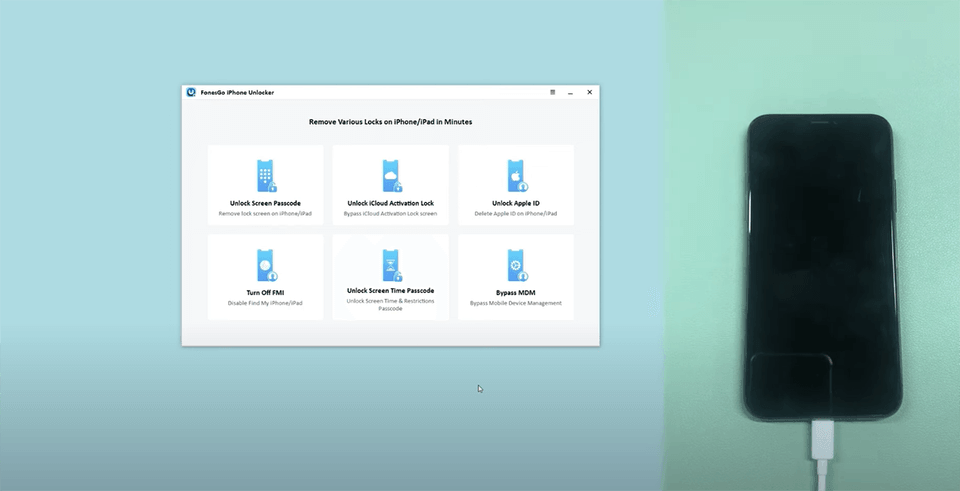
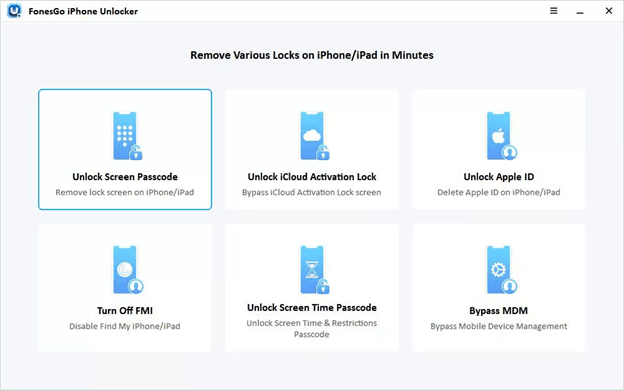
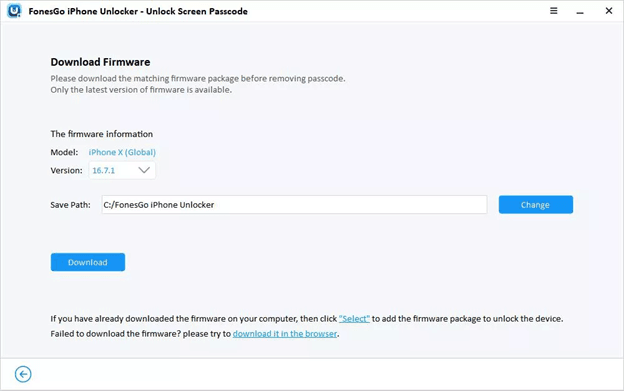
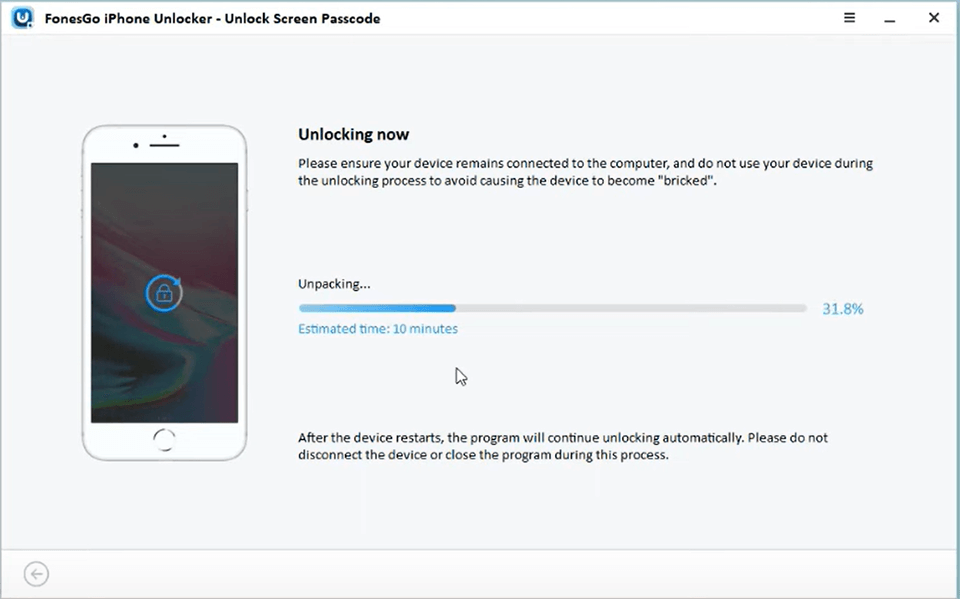
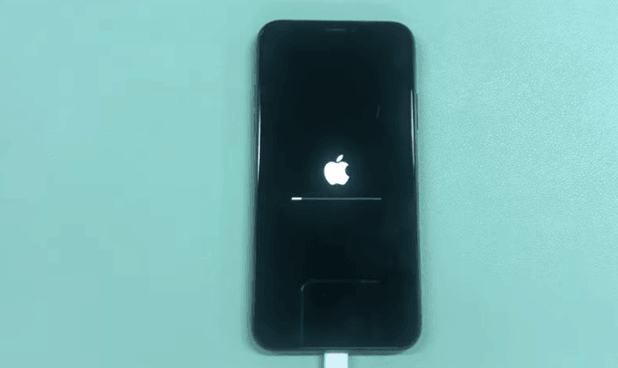
 Note
Note
Part 5: Preventive Measures
While the passcode requirement will seldom culminate in serious issues like data loss, it’s better to be safe than sorry.
Hardware malfunctions, for instance, can come with a high risk of losing data. To avoid this, maintain regular backups of your iPhone data. This can be done through iCloud or iTunes, depending on your preference. Follow this procedure for iCloud and iTunes.
Of course, you must also ensure that you keep your iOS up to date. Newer software versions offer a more enhanced level of security and solutions to most issues found in initial software.
Conclusion
Your iPhone will often require you to key in your passcode to enable Face ID as a security measure.
However, in other cases, requiring a passcode could signify hardware or software issues. If it happens several times a day with the Face ID Unlock already set and without restarting your device, that should tell you something is amiss.
Try to deploy the solutions provided, from the most basic, working your way to the most advanced. You can also opt for FonesGo iPhone Unlocker once every other method fails. The software is highly effective and can help resolve many passcode-related woes.

